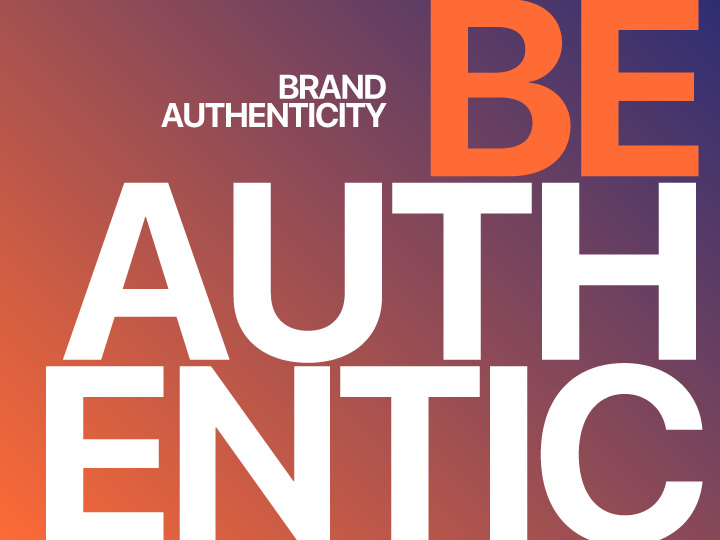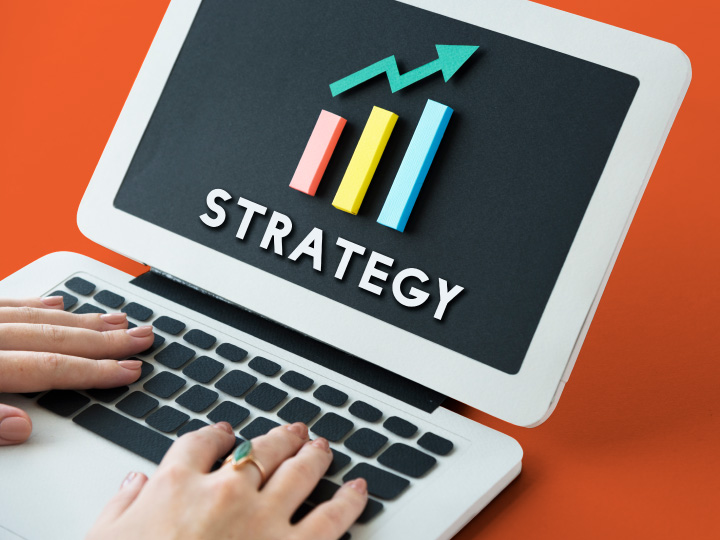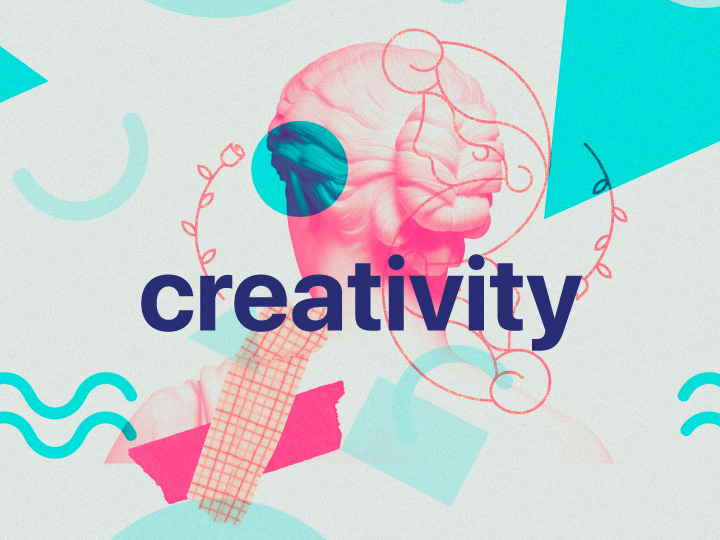| BRAND AUTHENTICITY |
In a world of more,
You have the library of Alexandria in your pocket right now as we speak. The world now produces over 2.5 quintillion bytes of data every day and by the time you read this the figures are likely to be bigger. What was in antiquity the largest source of information ever existed, is now a few clicks away in your pocket. This is a miracle. And this is a problem. In an age of overflowing information, determining the credibility and accuracy of sources is a huge pain. Misinformation. Propaganda. Ideas sans the filter. Irrelevant and useless information plagues 0the internet. Information overload is around the corner and an overwhelming need for quality information, relevant to each one of us is arising.
add less
The solution? Curation. Information is everywhere and whether reliable or unreliable, honest or dishonest, interesting or boring, the internet has buried creativity and authenticity in the tons of available information. However, creativity and authenticity are not the same. There is incremental creativity, the kind where you modify, you add and create something new to existing ideas. And then there is radical creativity, producing entirely new ideas like nothing ever seen before. Adding more to the world. Whichever you choose to work with, there will always be a need for curation.
& be authentic!
We are all curators. When you choose which movie to watch on Netflix, you separate the ones you will dislike from the ones that will worth your time. Spotify curates. Google curates according to your preferences. Marketers curate for you. But who does it well? Personalization algorithms give you what you want by calculating what you’ve told them you like but good curation adds value to it without appropriating it. It shows you new, exciting pathways and information you didn’t even know you needed!

› Content Marketing Institute: 11 Content Curation and Collaboration Tools to Save You Time
THE HOW
[…] how do you become trusted as a curator? The truth is there is no shortcut. Authenticity, consistency, excellent selections – it’s very hard to fake. Its why so many corporate attempts to become media curators fail. Gatekeepers of any kind have to be patient. They need a clear vision and they have to stick to it. The best legacy organisations have spent decades or even centuries building and augmenting that vision.
-Curation: The Power of Selection in a World of Excess by Michael Bhaskar
How do you become a trusted curator for yourself and your customers? Values. Identity. Transparency. Have that! Be honest to yourself and to your customers. Express your values and beliefs and be transparent about your practices and policies. Let the world see. Let the customers observe and let them be inspired, influenced to do the same. To express themselves, be unapologetic and let them be one with your message. Building trust with consistent messaging and reminding them you cater for those specific needs and values will create that bond. Research consistently shows that consumers are increasingly looking for brands that align with their own values and beliefs and are more likely to trust and engage with brands that they perceive as authentic. Authenticity is a process built on consistency.
Successful Authentic Campaigns
Dove's 'Real Beauty'

Talk about a movement! This campaign tapped into a growing cultural conversation about body image and self-esteem. The campaign’s message of celebrating natural beauty resonated with many women who were tired of feeling pressured to conform to traditional beauty standards. They used real women to convey a real message and that spoke to its audience on a deeper level. The core of its authenticity lies in its honesty, tolerance and understanding.
PATAGONIA’S ‘DON’T BUY THIS JACKET’
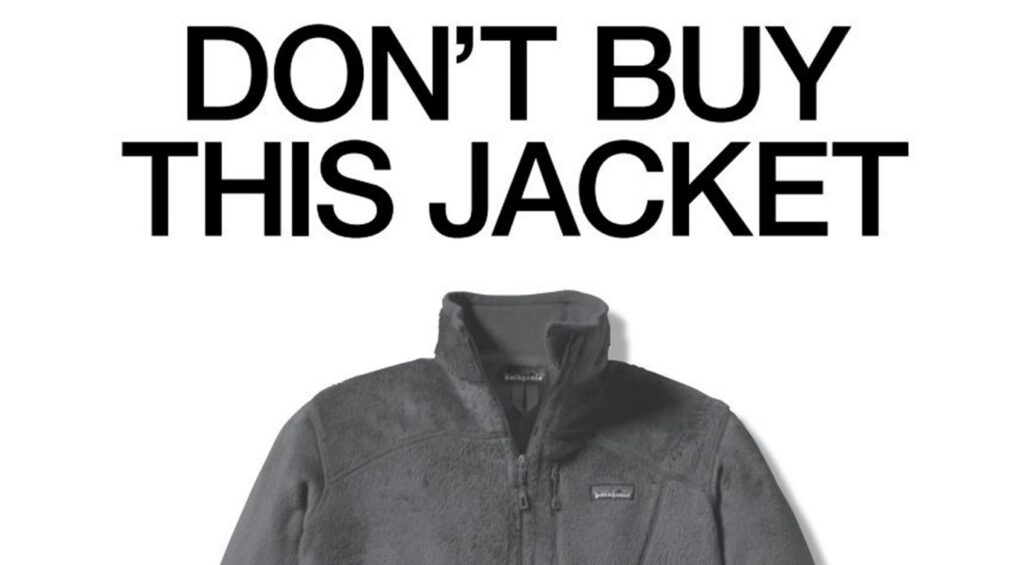
Did someone say reverse psychology? Patagonia is known for its commitment to sustainability and environmental activism. They have always been transparent about their production processes and materials, and actively engage in conservation efforts. With the ‘Don’t buy this jacket’ campaign they went against their own interests in the eyes of the consumer in order to hold on to and bring forward their beliefs. In the eyes of most consumers, it was a sacrifice. It was a powerful move that possibly risked bringing in less revenue only so that it can support a message, showcase an ideal, promote a value. And that, made them trustworthy, human.
BURGER KING’S ‘FLAME GRILLED SINCE 1954’

“Since 1954, more Burger King restaurants burned down than any other fast-food chain” So what does Burger King do? They choose transparency. Honest and upfront confrontation gave them an instant storytelling boost and actively engaged with customers and the ‘talk of the town’. A bold and unexpected move engaging cultural conversation about the environment and sustainability, by highlighting the brand’s commitment to using only flame-grilled cooking methods. The campaign built a deeper connection between the brand and its target audience and aligned with their values and beliefs. Paired with a strong online presence, the message was amplified and consistent, while the hashtag used to promote it, #flameGrilledSince1954 brought a sense of nostalgia and legacy back to the brand. It even gave a sense of rebellion that built a connection between the brand and a counter-culture attitude that went on to win them the Grand Prix in the Cannes Lion International Festival, in the category of Creativity’s Print & Publishing.
Controversial Campaigns
PEPSI'S 'LIVE FOR NOW' STARRING KENDAL JENNER
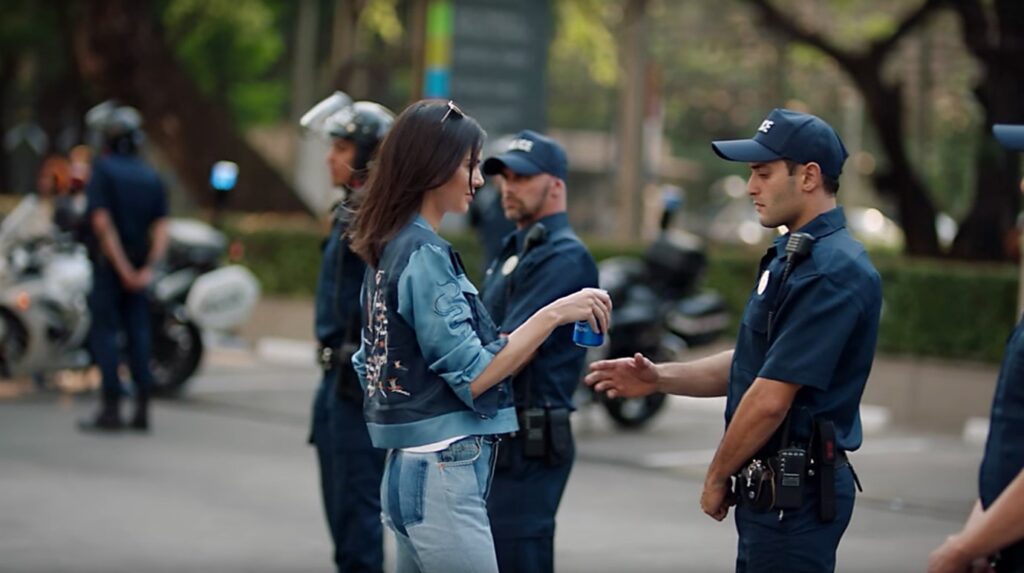
Oh, yes! The influencer culture. Brands rise and fall all the time at its hands. Here’s the problem: Influencers may not always be genuine in their endorsements of products, which can lead to a lack of trust from consumers and damage brands’ reputations regardless of size and power. Pepsi was no different. Their ‘Live For Now’ campaign was supposed to be advocating for “global unity, peace and understanding”. They attempted to showcase this by borrowing imagery from a ‘Black Lives Matter’ protest, where the protesters appeared happy and in the center of it all, Kendall Jenner, a highly controversial figure herself and a white woman, offering a can of Pepsi to a police officer, also white, who in turn accepts as the crowd cheers enthusiastically. They missed the mark by so much from undermining police brutality, appearing inconsiderate and tone-deaf to trivializing social justice struggles of marginalized groups. The ad was so heavily criticized and eventually pulled by Pepsi because at its core it seemed incredibly dishonest, profit driven in an insensitive way and so far from reality it seemed ironic. Even above all this, it was so far detached from Pepsi’s values and brand identity and based almost entirely on Jenner’s popularity when it wasn’t even necessary. And of course, the consumers caught on…
GAP LOGO REDESIGN

The epitome of an oopsie-daisy was presented to us GAP. After 20 years of successful branding GAP decides 2010 is the year to change their legendary well-established logo for “a more contemporary, modern expression” that swaps a “classic, American design” to a more “modern, sexy, and cool” one. Whether this was caused by pure FOMO or brand fatigue, the GAP logo redesign was poorly accepted. In fact, customers thought it was too different and did not accurately represent the company’s identity. Imagine that! It was even criticized for being too similar to other logos and too abstract for customers to recognize the brand. The backlash was so intense the company was forced to change it back to the original logo after just 6 days from the initial release. What can we take from this major fail? Know your identity and your brand’s value better than your audience does!
COCA-COLA 'NEW COKE'
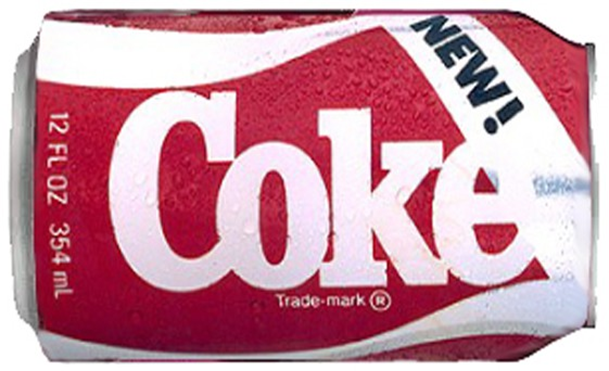
Quite similarly, Coca-Cola fell into the same trap. In 1985, the New Coke campaign made its debut claiming to offer a new, better tasting recipe of the original soft drink. The new recipe was intended to compete with Pepsi, which had been gaining market share. A beloved iconic product however, especially one with a 99-year long history of success, will always be stronger and more influential than any controversy between two brands. Coca-Cola was met with instant backlash from the public that claimed that not only did it not taste as good as the original but that “changing Coca-Cola is an intrusion on tradition” as well. The original recipe had raised entire generations and therefore the public outcry was so strong that Coca-Cola decided to bring back the original recipe under the name Coca-Cola Classic. In a few words… if it ain’t broke don’t fix it!
THE WHY
All these brands, regardless of campaign performance are known for their authenticity, and have built a loyal customer base because of that. The importance of authenticity in brand development can be summarized with a few specific, interconnected characteristics:
UNIQUENESS
The attention catcher! A one-in-a-million brand identity is everything! It increases your value and sets you apart from your competitors. Do you immediately stand out in a crowd? If yes, trust that you will appeal to consumers, especially when the consumerist eye has been so tired of seeing the same thing over and over again. Your brand’s identity should be deeply ingrained in your existence and your mission should be reflected in it. What is your purpose, what problems do you solve, why do you exist as a brand? Answer those, put them in pretty words and you got yourself a brand identity. Now communicate this with others like you, consumers, investors, other brands (good for partnerships!) and make sure you align with each other’s values and virtues. Consumer engagement, visibility and loyalty will skyrocket!
LOYALTY
is key! A strong sense of purpose and a clear mission that goes beyond just making a profit will build deeper connections with consumers and create a sense of community around the brand. Customers with a deep connection to your brand tend to be more loyal. Whether this loyalty is emotionally driven or benefit-driven, the resulting loyal customer base is likely to stick with you over time. Long-term customers are aware and aligned with your brand’s values and mission and they see you as genuine and true to yourself. All these positive emotions towards your brand create a ripple effect that lead to a loyal customer base that will trust and follow you.
TRUST
goes both ways. A brand that is transparent and genuine about their products and practices has already laid the foundation for building trust with customers. In turn, consumers themselves will trust and engage with brands that respect them enough to be open that way, to be honest and consistent in their actions. This trust can lead to increased brand loyalty and advocacy, as well as a more positive overall perception of the brand i.e., a positive reputation. It truly is a chain reaction.
REPUTATION
A trustworthy and responsible brand is a brand everyone is looking for. After all, a brand (no matter its size and power) will crumble and fall entirely at even the slightest hiccup that takes a hit at its reputation. Nobody wants to associate or be associated with an ingenuine or harmful brand. A brand, in many ways is also a movement, a voice or even a platform that raises an issue just by being environmentally friendly, ethical, or socially responsible. Look at the brands such as Balenciaga, Shein and Patagonia, notice the difference of their reputations, the public’s reactions to them all focused on one thing: Their reputation. Simply viewing a brand in a positive light can lead to brand awareness and customer loyalty. Your customers become your promoters, word of mouth is on your side and user generated content becomes a possibility. A brand responsible in its actions contributes to a more sustainable and responsible economy while simultaneously being a voice for important issues. What does that do? It leaves an impact…
IMPACT
Authentic brands are impactful. They listen to customers, align values, engage in practices that consumers agree with, focus on an honorable mission and therefore impact society strongly. A business caring for the environment is a concept previously quite controversial. Business means profit, profit means taking advantage of natural resources. A business sensitive enough to care about its impact on the environment was a big contrast, an ethical business used to be two worlds apart, a socially responsible business was two opposite sides in the same spectrum. Then the world realized fair labor practices, charitable giving and promoting diversity and inclusion will speak to more customers than a good offer ever will. Even further than that, it will likely touch more hearts than any strategy will manage to compete with. And yet again, it all leads to the same results: the more hearts, the more customers and the more customers, the more sales.
SALES
The end of a chain. The end goal. Increased sales go beyond a good marketing campaign. The market is now saturated with everything you’ll even need in any price you might think of and even any quality you might prefer! Attracting and retaining customers as long a process as it might be, it might not even be enough. Consumers are looking to identify with the name and the logo they put on them or around them. It is now a characteristic trait of them, a show of their personality, their belief system and how seriously they take not only who they pick to support but also their own reputation. Brands have evolved to be an extension of ourselves and represent who we are now and that is not an easy feat. If you buy a reusable mug, you are not simply holding a container of liquid you are supporting environmental movements and therefore you are a conscious buyer with morals. A purchase is no longer a simple act and therefore the decision must be a conscious one. So, while your customer is looking to find their next conscious buy, make sure you are unique enough to catch their eye.
TA-DAH!
And just like that the circle is now complete. With these few steps we did a full 360o of the hows and whys of authenticity starting from uniqueness and ending back at the same spot. Similarly brand authenticity does not only revolve around these factors it undeniably surrounds them. That goes to show that in the end, when building your brand make sure you know your customers well enough to trust them as much as you are asking them to trust you while you guide them through the authenticity chain and both of your end goals…the conscious, ethical and ever-ending purchase. Bibliography Bhaskar, Michael. (2016). Curation: The Power of Selection in a World of Excess. Fabian Eggers, Michele O’Dwyer, Sascha Kraus, Christine Vallaster, Stefan Güldenberg, The impact of brand authenticity on brand trust and SME growth: A CEO perspective, Journal of World Business, Volume 48, Issue 3, 2013, Pages 340-348. Oh, Hyunjoo & Prado, Paulo & Korelo, Jose Carlos & Frizzo, Francielle. (2019). The effect of brand authenticity on consumer–brand relationships. Journal of Product & Brand Management. 28. 10.1108/JPBM-09-2017-1567. Portal, Sivan & Abratt, Russell & Bendixen, Michael. (2018). The role of brand authenticity in developing brand trust. Journal of Strategic Marketing. 27. 1-16. 10.1080/0965254X.2018.1466828. Roushdy, Ahmed. (2015). The Relationship between Consumer-Based Brand Authenticity and Brand Loyalty: A Mediating Role of Brand Satisfaction. Articles Forbes published an article in 2019 called “Consumers Want Brands to Take a Stand on Social Issues” Harvard Business Review published an article in 2020 called “Consumers Want Brands to Take a Stand on Social and Political Issues” Journal of Brand Management in 2018, “Authenticity as a Basis for Trust and Loyalty in Services” Journal of Business Research in 2018, “The impact of brand authenticity on consumer trust: A conceptual framework” Journal of Consumer Psychology in 2020, “Authentic Brands and Consumer Well-being: The Mediating Role of Self-congruence”
Stay up to date with the latest Digital News!
CONTACT US
